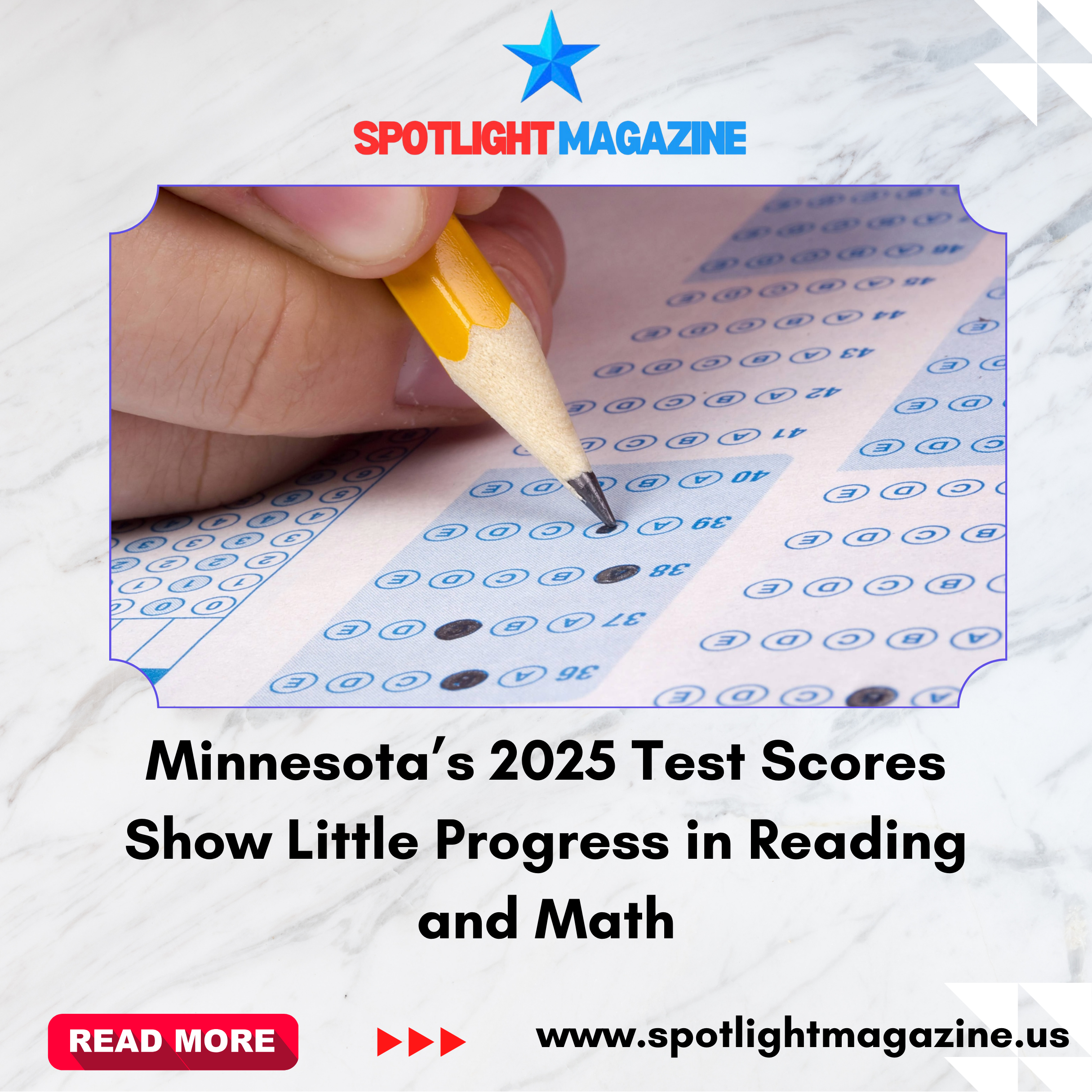Minnesota’s latest statewide test scores for 2025 show that student performance in reading and math has not changed much from last year, according to the Minnesota Department of Education (MDE). While test results stayed flat, student attendance showed a small improvement.
Families can explore results for individual schools or districts through the Minnesota Report Card and MDE’s Data Center. These tools allow people to view performance by grade level, district, school, and student groups.
Math and Reading Results
In 2025, 45.2 percent of Minnesota students were considered proficient in math. This is a very slight decline from 45.5 percent in 2024. About one-third of students, or 32.2 percent, did not meet math standards at all.
Reading results followed a similar pattern, with statewide proficiency also in the mid-40 percent range. In other words, less than half of Minnesota students met state standards in both subjects.
English Learners Struggle to Advance
For students who are learning English, the results showed that many are still in the early stages of language development. On the ACCESS for ELLs exam, which measures English proficiency, 37 percent scored at Level 3, described as “Developing.” Fewer than 3 percent reached the highest levels of proficiency. At the same time, 42 percent tested at the two lowest levels, showing there is still a long way to go in supporting these students.
Attendance Sees a Small Improvement
While test scores remained mostly unchanged, student attendance slightly improved. Statewide, 75.5 percent of students attended at least 90 percent of school days during the 2023–24 school year. This was up from 74.5 percent the previous year. The improvement, though small, is seen as a step in the right direction since regular attendance plays a key role in student success.
Federal Rules Affect Test Results
MDE pointed out that federal reporting rules under the Every Student Succeeds Act impact how scores are calculated. Students who do not take the test are counted the same as students who do not meet standards. This rule can lower the overall proficiency rates for the state.
Commissioner’s Response
Education Commissioner Willie Jett described the results as “a moment in time.” He emphasized that long-term efforts are underway to improve student performance. Among the key initiatives are the Reading to Ensure Academic Development (READ) Act, which focuses on improving literacy, and expanded teacher recruitment and retention programs designed to strengthen Minnesota’s teaching workforce.
Accountability Measures for Schools
Alongside the test results, MDE also released updated information through the “North Star Accountability” system. This system evaluates schools not only on test scores but also on factors like student growth, progress in English proficiency, consistent attendance, and graduation rates.
This year, 310 schools across Minnesota were identified for targeted support, the same number as in 2022. These schools will receive extra help to improve student outcomes. However, MDE noted a positive sign: fewer schools are being flagged repeatedly for needing comprehensive support. This suggests that some districts are responding effectively to the help they have already received and making progress in supporting their students.
Looking Ahead
The 2025 statewide test results highlight the challenges facing Minnesota’s education system. Less than half of students are meeting standards in math and reading, and English learners continue to face major hurdles in reaching higher levels of proficiency. At the same time, small gains in attendance and signs of improvement in districts receiving support show that change is possible.
State officials believe the ongoing initiatives, such as the READ Act and teacher-focused programs, will gradually lead to stronger outcomes. While this year’s results may not reflect major progress, the Minnesota Department of Education says they provide a clear picture of where the state stands and what areas need the most attention moving forward.


